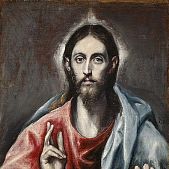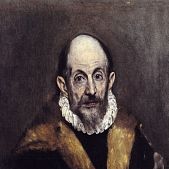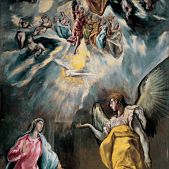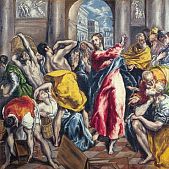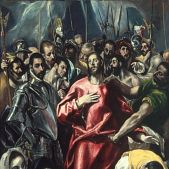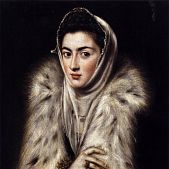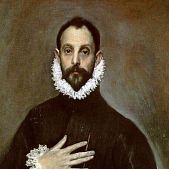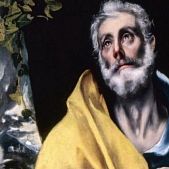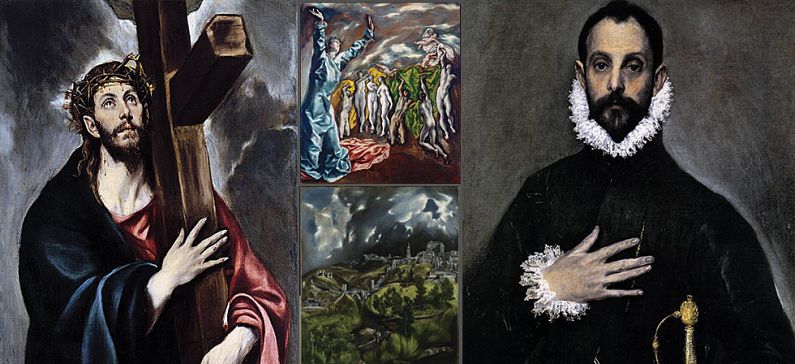
One of the greatest painters of all time
Domenikos Theotokopoulos, well known as El Greco was one of the greatest painters. El Greco’s paintings adorn the largest museums and private collections. In Greece there are six paintings of Theotokopoulos: “St Luke Painting the Virgin and Child” and “The Adoration of the Magi” (Benaki Museum), “The Coronation of the Virgin” and “Angelic Concert” (National Gallery), “The Baptism of Christ” and “Mount Sinai” (Historical Museum of Crete).
He was born in 1541 in the village of Candia, which was at that time part of the Republic of Venice, present day Heraklion in Crete. El Greco was descended from a prosperous urban family. His father, Georgios Theotokopoulos was a merchant and tax collector. El Greco had an older brother Manoussos.
From a young age he studied ancient Greek and classical literature and he received his initial training as an icon painter in Crete.
In 1567, he left Candia and went to Venice, where he became a disciple of the great painter Titian, and he became familiar with the Venetian Renaissance style.
From 1570 and until 1577 El Greco was in Rome. He was hosted at the palace of Cardinal Alessandro Farnese. In 1572, he joined the Guild of Saint Luke.
In 1577, El Greco left for Spain, where many Italian artists had moved there in order to participate in the decoration of El Escorial palace. However, King Philip II of Spain was not satisfied from El Greco’s “bizarre” artwork.
He was settled in Toledo, the old imperial capital of Spain and also the religious capital of the country. There, the proud Cretan undertook large orders and painted many of his marvellous artworks such as “El Espolio”, “The Burial of the Count of Orgaz” etc.
In 1578, his son Jorge Manuel was born. Theotokopoulos never married the mother of his child Jeronima de las Cuevas.
El Greco died on 7 April 1614 in Toledo and he never returned back to his homeland. He always signed his paintings in Greek using Byzantine characters.
TIPS...
-
Domenikos Theotokopoulos remain known with the nickname “El Greco”, which means the Greek, the nickname was given to him in Italy as a reference to his Greek origin. The article “El” possible comes from the Venetian dialect or Spanish. His respective nickname in Spanish would be “El Gregio”. In Italy and Spain was known as “Domenico Greco”, ie Domenico the Greek, while his nickname El Greco prevailed after his death. He was signing his artwork as “Demenikos Theotokopoulos” in order to give emphasis to his Greek origins.
- According to a census of his belongings made by his son, Jorge Manuel, Theotokopoulos had 27 Greek philosophy, literature and religious books, 67 Italian books, 17 Spanish books, 19 architecture books, three workbenches, 143 paintings, 15 models from plaster, 30 models of clay and wax, 150 drawings, 30 drafts and 200 chalcographies.
- Pablo Picasso was greatly influenced by El Greco and he characterized him as his “father” regarding painting.
- During his lifetime, El Greco’s work was appreciated and promoted more from scholars, humanists and intellectuals and less from the artistic establishment.
-
El Greco refuses to pay taxes, arguing that painting is a liberal and not a mechanical art. He is the first artist to be granted tax exempt status in Spain.


